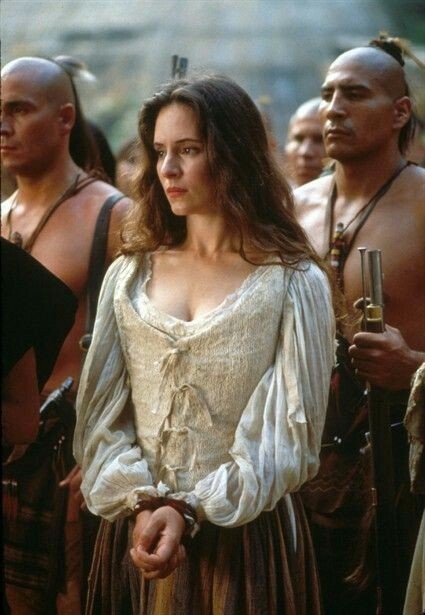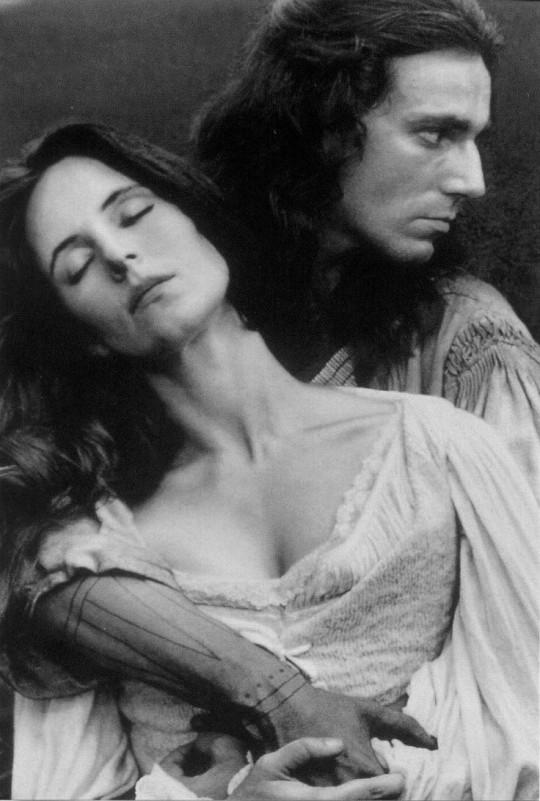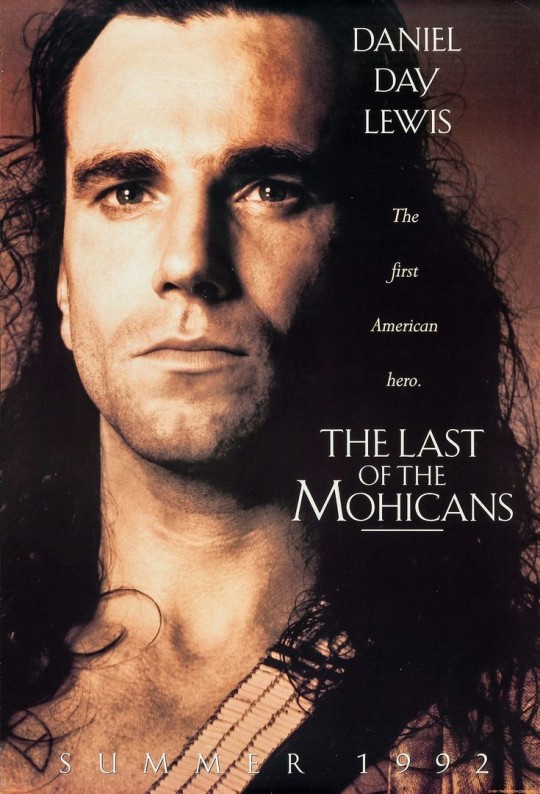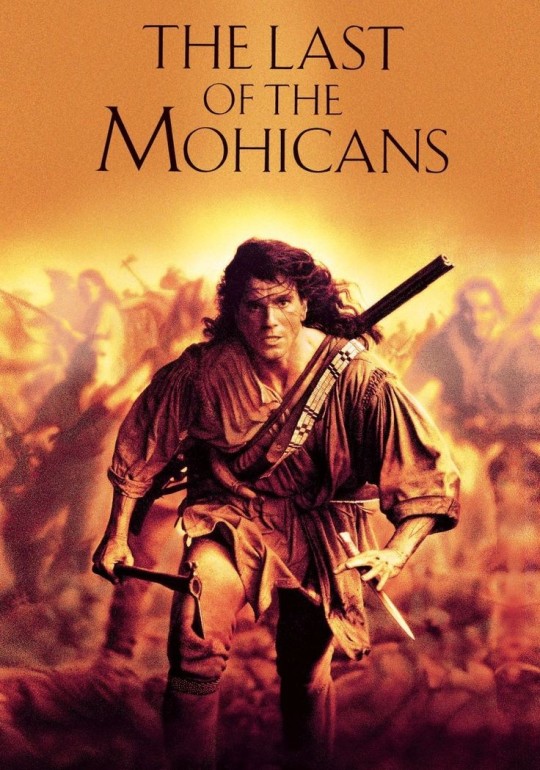#the last of the mohicans 1992
Explore tagged Tumblr posts
Text

3 notes
·
View notes
Text

Daniel Day-Lewis on the set of The Last of the Mohicans (1992)
#daniel day-lewis#the last of the mohicans#michael mann#behind the scenes#james fenimore cooper#nathaniel hawkeye poe#adventure movies#90s movies#1990s#1992
234 notes
·
View notes
Text

The Last of the Mohicans
7 notes
·
View notes
Text

Daniel Day Lewis & Madeleine Stowe, The Last of the Mohicans (1992)
15 notes
·
View notes
Text
Pretty much any Michael Mann film can be described as: "the masculine urge to fuck your entire life up".
I refuse to elaborate any further.

#michael mann#film#director#cinema#thief#1981#james caan#manhunter#1986#last of the mohicans#1992#heat#1995#the insider#1999#collateral#2004#miami vice#2006#blackhat#2015#public enemies#2009
30 notes
·
View notes
Text
Reprise Vol. 1 - Master & Slave
I think it's no big secret that Paul doesn't have much good to say about Kiss' Carnival of Souls, to put it mildly.
Or he simply does everything imaginable to at least create such impressions whenever this album title should rarely enough become the subject of an interview question. Of course, he's welcome to do as he pleases, but personally, from my humble perspective, I think it's a bit of a shame, because I can also remember times when he spoke a tiny bit differently about it.
For example, I can still remember the time when the subject of a reunion was still treated as fictitious, and it wasn't on anyone's horizon, least of all Paul's and Gene's. That was back in 1994/95, when Kiss' laudable motto of perseverance and giving their best was for a change increasingly emphasized in their new music.
And I still remember very well that regular little Kiss feature in the German Rock Hard magazine, which was supervised by their Kiss Die-Hard (0), and from whom one got the vivid impression that he regularly got a certain insight into the world of our favorite band. I think it must have been February or March 1995 when Paul and Gene (1), but also Eric Singer (2), apparently got in touch with the interviewer directly from the rehearsal room in a telephone interview and Paul confidently said, not without his usual side-swipe at Gene, that his songs were much more melodious and heavier than Gene's. There was a certain pride in that. At some point later he even went so far as to claim that the new album was the best and heaviest since Creatures of the Night. Oh my!
What I mean, since that's a rather thoughtful and equally rare tribute to their own music, which was previously only outspoken to give a very special shine to the indeed excellent Revenge, and the return to form associated with it. And I must add to this Paul seemed quite proud of Revenge in 1992 regardless of how hard he had contributed to the previous albums in the 80's anyway. But who knows, once again, it was probably just the latest sensationalization of the upcoming album (3). Promotion is a double-edged sword, but to wipe Revenge away so succinctly because of it, I really don't know. But maybe and probably because it wouldn't have sounded so good to say their new album was the best since... their last one.
But to get my act together and to at least briefly talk directly about Master & Slave in this context.
So, as I already mentioned in my original entry, Master & Slave had the working title: Paul's Riff. In my perception, this suggests pride and respect, not necessarily from Paul himself, but clearly from his band environment. And the fact that such a meagre, yet all-saying no-name was chosen as accepted as a working title, if not even honored from everybody involved clearly speaks for itself.
And because this is a reprise, I'll simply feature an excerpt from my original text about what I see in this song:
"What begins in Not For the Innocent with a few approaching, ominous tones, continues in Unholy as a small extension in a slightly different pitch, and a much more compact back and forth oscillation of these tones, which thereby does not form the entire riff, but only a complementary part of it. In Master & Slave the whole thing gains in drasticness, and the motif is doubled to a lower pitch, added to the previous one to secure its terrain, only to turn into a Black Sabbath motif a la After All. An endlessly repeating highly dynamic acrobatic feat in loud and quiet/guitar and bass contrast."
When writing Master & Slave, Paul must have thought to himself: Ok Gene, a dark album full of Unholys shall it be? This time I'll listen to you, then you shall get Unholy. Which must have stimulated his ambition to try to outdo Gene in terms of Unholy by more than a small margin. I think the result shows in all strength what the right ambition can achieve.
"To conjure up this wet dream of riff Paul must have really tried hard and done his very best to achieve such a result - regardless of what he claims about Carnival of Souls as a whole today."
It is a real pity that he no longer stands by it. Gene and, above all, Bruce (4) seem to have fewer problems with this.
Side Notes:
(0) Jan Jaedike.
(1) Gene emphasized the psychedelic component and compared Carnival of Souls to the Rolling Stones' Satanic Majesties Request (1967) (5) , and that they couldn't explain either why it sounded different from the previous album.
(2) Eric said the album was super heavy and exactly the kind of music he wanted to play. I love to mention this because he had also clearly distanced himself from Carnival of Souls over the past few years. Klassik!
(3) Can anyone still remember how they loud-mouthedly advertised Crazy Nights as a mixture of Animalize and Destroyer back then? There's even a Youtube video of it, but don't ask me where. Anyway, that was still was something different.
(4) Or the last of the Mohicans, as I like to call him.
(5) Hmm, which Stones album did Ace's cover of 2000 Man actually come from?
Master & Slave starts from the beginning. Unholy and Not For The Innocent are highlighted. Turn up the volume and open your ears, I assume no liability:
Master & Slave (1997)
youtube
Unholy (1992)
youtube
Not For The Innocent (1983)
youtube
I'll add After All by Black Sabbath on top.
After All (1992)
youtube
#Kiss#Paul Stanley#Bruce Kulick#Last of the Mohicans#Curtis Cuomo#Gene Simmons#Vinnie Vincent#Master & Slave#Carnival of Souls#Lick It Up#1997#1992#1983#Revenge#Bob Ezrin#Michael James Jackson#Toby Wright#Rock Hard#Magazine#1994#1995#The Rolling Stones#Satanic Majesties Request#1967#Roland Rockover#Eric Singer#Youtube#Black Sabbath#After All#Jan Jaedike
17 notes
·
View notes
Photo

21 notes
·
View notes
Text
Synastry Aspects That Feel Like Fate Whispering
Valentine's Readings are Open.Here


🍒 Lilith square Venus – "She’s a nightmare, dressed like a daydream." – Gone Girl (2014)
🍒 Sun conjunct Moon – "Whatever our souls are made of, his and mine are the same." – Wuthering Heights (1992)
🍒Psyche conjunct Sun – "You and I are meant to be together. Period. The end." – Grey’s Anatomy
🍒Juno conjunct Moon – "I found my home in you." – Dear John (2010)
🍒 Venus conjunct Mars – "Kiss me. Kiss me as if it were the last time." – Casablanca (1942)
🍒Chiron trine Venus – "Loving you is like touching the sun—beautiful, but dangerous." – Great Expectations (1998)
🍒 Pluto square Venus – "I wish I knew how to quit you." – Brokeback Mountain (2005)
🍒Eros trine Mars – "We were made of fire and chaos, but I wouldn't have it any other way." – Mr. & Mrs. Smith (2005)
🍒Nessus opposite Sun – "You destroy me and I love you for it." – Revolutionary Road (2008)
🍒Mercury conjunct Mercury – "You had me at hello." – Jerry Maguire (1996)
🍒Mars opposite Moon – "Love is passion, obsession, someone you can't live without." – Meet Joe Black (1998)
🍒Neptune trine Venus – "They say when you meet the love of your life, time stops." – Big Fish (2003)
🍒Saturn conjunct Moon – "You make me want to be a better man." – As Good as It Gets (1997)
🍒Jupiter opposite Sun – "To me, you are perfect." – Love Actually (2003)
🍒Uranus square Venus – "I’m also just a girl, standing in front of a boy, asking him to love her." – Notting Hill (1999)
🍒Pluto conjunct Sun – "Our love is like the wind. I can't see it, but I can feel it." – A Walk to Remember (2002)
🍒Mars conjunct Descendant – "I want all of you, forever, you and me, every day." – The Notebook (2004)
🍒Saturn square Venus – "I gave you my heart, and you gave it back in pieces." – Eternal Sunshine of the Spotless Mind (2004)


🍒Mercury opposite Mars – "You’re the first boy I ever kissed… and I want you to be the last." – Sweet Home Alabama (2002)
🍒Psyche trine Neptune – "You are my dream and my reality colliding." – Inception (2010)
🍒Eros opposite Pluto – "You pulled me into your gravity, and now I can't escape." – Twilight (2008)
🍒Juno trine Sun – "If my soul had a name, it would be yours." – Before Sunrise (1995)
🍒Pluto opposite Moon – "No matter what occurs, I will find you." – The Last of the Mohicans (1992)
🍒Neptune square Mercury – "It’s like in that moment, the whole universe existed just to bring us together." – Serendipity (2001)
🍒Chiron opposite Moon – "You saw all my scars and chose to stay." – Good Will Hunting (1997)
🍒 Venus square Mars – "Nobody puts Baby in a corner." – Dirty Dancing (1987)


🍒Chiron conjunct Moon – "It would be a privilege to have my heart broken by you." – The Fault in Our Stars (2014)
🍒Juno conjunct Venus – "I don’t need the world, just your hand in mine." – Me Before You (2016)
🍒Lilith opposite Mars – "Your darkness speaks the same language as mine." – The Girl with the Dragon Tattoo (2011)
🍒Jupiter conjunct Moon – "Life’s not the amount of breaths you take, it’s the moments that take your breath away." – Hitch (2005)
🍒Nessus trine Venus – "The love that hurts the most is the one that never truly dies." – Blue Valentine (2010)
🍒Eros conjunct Venus – "You make my heart race in a way I never knew was possible." – Moulin Rouge! (2001)
🍒Psyche conjunct Mercury – "You speak, and I hear a melody only my soul understands." – The Age of Adaline (2015)
🍒Lilith square Moon – "You awaken something wild in me, something I was told to tame." – Maleficent (2014)
🍒Eros sextile Neptune – "You feel like a dream I never want to wake up from." – Romeo + Juliet (1996)
🍒Juno opposite Pluto – "If love is a battlefield, then you are both my war and my peace." – Pride & Prejudice (2005)
🐝✨
#astrology#astro community#astro observations#astro notes#birth chart#horoscope#synastry#synastry observations#synastry aspects#sun in synastry#moon in astrology#moon in synastry#venus in astrology#venus in synastry#asteroid#asteroids#lilith#random observations
231 notes
·
View notes
Text
Ah, 90s TV
Y'all, I don't know how or why, but I've somehow fallen into a complete rewatch of "Dr. Quinn, Medicine Woman" (although I never watched this show start to finish when it aired, just now and then). It's surprisingly seductive and it sucked me right in. I'm slightly disturbed how VINTAGE it feels - it looks and feels like it was a contemporary of like, Little House on the Prairie, but was in fact made in the mid-90s (LHOP aired in the mid-70s to early-80s, btw).
The show holds up surprisingly well. It's got the typical tone and structure of "heartwarming prime time drama" from the 80s-90s (what I sometimes think of as the Schlock Era of TV). Almost entirely episodic, the succession of guest stars having an Incident of the Week that's totally self-contained (like seriously, one episode her little son had to have brain surgery and they made kind of a big thing of shaving his head and the next episode, full head of hair like it never happened). People are constantly getting kidnapped and experiencing grievous bodily injury so the other characters can lose their minds over it.
They do not shy away from The Issues. We've done "The Army Is Kind of Evil, Actually", "The Indians Are Being Treated Like Shit And That's Not Okay," "Racism is Bad, Actually", "Domestic Violence is Rampant and Also Bad", "Vaccines are Good", "Immigrants Are Also Being Treated Like Shit and That's Also Not Okay" and "Capitalism Poisons the Environment" and that's just the first season. Plus the usual personal storylines, like "the Civil War gave people PTSD," and "my teenage son wants to grow up too fast and I'm not actually his mom but it's too much" and "the mountain man I'm in a situationship with is a bit out there for my stuffy Boston relatives" and "I'm determined to be a pioneering woman doctor but sometimes I'm scared and uncertain and this shit is hard ok" and "hey I could marry this Boston doctor who actually thinks I'm awesome and should be taken seriously too bad this mountain man has my whole-ass heart."
You can almost HEAR the voices of the producers, too. "Okay we want this beautiful woman to be a DOCTOR and fighting against stereotypes, but we also want her to be MOTHERLY but also be free to have a SEXY ROMANCE with the mountain man so howwwwww wait I know she'll inherit three kids from a woman she just met who dies in the pilot. BRILLIANT."
The tightrope they're walking with most of the townspeople is tricky, too. Like they need them to be folksy and for you to like them, but also to exhibit period-typical attitudes (racism, sexism, etc) so that Dr. Mike can push back against it, so they often whipsaw wildly between likable and unlikeable depending on the needs of the plot.
I'm kind of impressed that they usually avoid making Dr. Mike a Super Doctor. She loses patients, she doesn't know how to treat some things - and they have to keep her to period-appropriate medical knowledge, so no antibiotics, brand-new smallpox vaccines, germ theory is barely a thing (it was very very new in the post-civil-war era). They don't have her independently recreating modern medicine (which is sometimes a thing Outlander does, although Claire has the benefit of being a time traveler whereas Dr. Mike is not).
Man you can also see the footprints of "Last of the Mohicans" all over this show, too. She couldn't have one of the stuffy townspeople as a love interest - she has to have the Wish version of Hawkeye (no shade on Sully, love Sully, but they obviously downloaded him right from that film). The film came out in 1992, this show started in 93.
It's shockingly balming to the soul. It's from an era when TV didn't take itself very seriously, there were no subreddits to pick everything apart, and the earnestness is just on full display.
I saw a post from someone else watching this who said "I just found out that the main couple on this show is a REALLY SLOW BURN" and like...oh you sweet summer child. Mike and Sully are not that slow. They were wildly obviously telegraphed as the OTP of this show from the first episode, had kissed by the end of the first season, declared their love in the first third of the second season and were married by the end of the third season.
That's not a slow burn by old-school TV standards. A slow burn is eight seasons of longing glances and slightly perturbed expressions when the other one is dating someone else. These two were all in from Minute One. Like, every episode has that obvious ticky box of "Mike and Sully have a sweet/tender/longing moment." They were constantly hugging, touching, and generally being all up in each other's business. This was never a "will they or won't they" although they tried to throw a few obstacles between them, there was never any doubt about it.
Man, this is real UST. This is how it's done. And these seasons are like 29 freaking episodes! WE USED TO HAVE A SOCIETY.
197 notes
·
View notes
Text


Keanu Reeves dressed like a 1930s cartoon drifter at a screening of The Last of the Mohicans, 1992.
#haven’t posted my baby boy Keanu in a long time#Keanu reeves#1990s#90s film#bill and ted#the matrix#my own private idaho#90s aesthetic
86 notes
·
View notes
Text

2 notes
·
View notes
Text
Alice and Uncas from the Last of Mohicans (1992) somehow remind me of Elain and Lucien.
I know the story ends tragically for A. and U. but look at them 🥺


And the waterfall scene...imagine this as Lucien holding Elain at Hybern's when she was Made:


Brb crying
24 notes
·
View notes
Text










The Last of the Mohicans (1992)
dir. michael mann
#the last of the mohicans#james fenimore cooper#costume drama#daniel day lewis#madeleine stowe#jodhi may#wes studi#eric schweig#russell means
72 notes
·
View notes
Text

04-24-24 | Native actor Eric Schweig played Hawkeye's adopted Mohican brother, Uncas, in Michael Mann's 1992 epic, The Last of the Mohicans. misterlemonztenth.tumblr.com/archive
20 notes
·
View notes
Text
[“A deep psychosis inherent in US settler colonialism is revealed in settler self-indigenization.
The phenomenon is not the same as the practice of “playing Indian,” which historian Philip Deloria brilliantly dissected, from the Boston Tea Party Indians to hobbyists dressing up like Indians to New Age Indians. Settler self-indigenization’s genealogy can be traced to the period of the mid-1820s to 1840s, what historians call the Age of Jacksonian Democracy, marked by, among other phenomenon, the blossoming of US American literature.
The giants of the era are well known to every US high schooler who has had to suffer through American Lit classes—Thoreau, Emerson, Whitman, Longfellow, Hawthorne, and dozens of others. Among them was James Fenimore Cooper (1789–1851), who conjured the United States’ origin story in his Leatherstocking Tales, made up of five novels featuring the hero Natty Bumppo, also called variously, depending on his age, Leatherstocking, Pathfinder, Deer-slayer, Hawkeye. Together the novels narrate the mythical forging of the new country from the 1754–1763 French and Indian War to independence to the settlement of the plains by migrants traveling by wagon train from Tennessee. At the end of the saga, Bumppo dies a very old man on the edge of the Rocky Mountains as he gazes east. But it is The Last of the Mohicans, subtitled A Narrative of 1757, that relates the self-indigenization myth that has endured. The Last of the Mohicans was a best-selling book throughout the nineteenth century and has been in print continuously since, along with a half dozen Hollywood movies, the first in 1911, plus several television series made in the US, Canada, and Britain. The most recent Hollywood production was a blockbuster that appeared in 1992, the Columbus Quincentenary.
Cooper conjured the birth of something new and wondrous, literally, the US American race, a new people born of the merger of the best of both worlds, the Native and the European, not a biological merger but something more ephemeral involving the disappearance of the Indian. Cooper has Chingachgook, the last of the “noble” and “pure” Natives, die off as nature would have it, handing the continent over to Hawkeye, the indigenized settler and Chingachgook’s adopted son. The publication arc of the Leatherstocking Tales parallels the Jackson presidency. For those who consumed the books in that period and throughout the nineteenth century—generations of young white men mainly—the novels became perceived fact, not fiction, and the basis for the coalescence of US American settler nationalism, the settler ideology that justified the fiscal-military state.”]
roxanne dunbar-ortiz, from not a nation of immigrants: settler colonialism, white supremacy, and a history of erasure and exclusion, 2021
#roxanne dunbar ortiz#lesbian literature#history stuff#cw genocide#essential for understanding American literature and ESPECIALLY American fantasy literature
127 notes
·
View notes
Text

The Last of the Mohicans (1992) Directed by Michael Mann. Alternative movie poster.
https://instagram.com/laurentcarbonelle
#illustration#drawing#movie poster artwork#digitaldrawing#digitalart#fanart#cinema#alternative movie poster#digitalpainting#illustrationartists#michael mann#daniel day lewis#madeleine stowe#wes studi#last of the mohicans#native american
10 notes
·
View notes